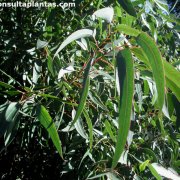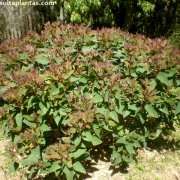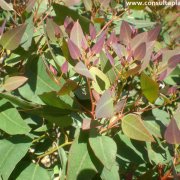Care of the tree Corymbia eximia or Yellow bloodwood |
|
The genus Corymbia, family Myrtaceae, includes more than 100 species of trees native to Australia that were previously classified in the genus Eucalyptus. Some species are: Corymbia eximia, Corymbia opaca, Corymbia aparrerinja, Corymbia ficifolia, Corymbia maculata, Corymbia citriodora, Corymbia calophylla. Common name: Yellow bloodwood. This species is native to New South Wales, Australia. They are evergreen trees that reach 20 meters (65.6 feet) in height. The Nana variety does not exceed 8 meters in height. The trunk is twisted and its bark yellowish and rough. The leaves are grayish green (bronze when they sprout), wide, triangular and have a very marked midrib. The flowers appear in bunches and are yellow or cream in color. They can bloom from mid-winter to early spring. Yellow bloodwood is used as shade trees and in public streets and parks. It's ideal for Mediterranean coastal gardens and for low maintenance gardens. With its flowers and fruits, floral decorations are made. Corymbia eximia grows in full sun and semi-shade exposures. It resists mild and occasional frosts. These trees can grow in many types of well-draining soil: poor, loose clay, sandy, or gravelly. Water moderately, waiting for the substrate to dry; it resists drought well. Yellow bloodwood does not need fertilizers. Prune after flowering to remove dry branches. Corymbia eximia is a resistant plant to the usual pests and diseases. Yellow bloodwood propagates easily by seeds sown in spring or autumn in a seedbed at 20 ºC (68 ºF) in sandy substrate. It's advisable to deposit the seeds on the surface and cover them very lightly with substrate, not to bury them. |
Images of the tree Corymbia eximia or Yellow bloodwood |
Find plants
Corymbia eximia or Yellow bloodwood | Care and Growing
© 2025 FavThemes





